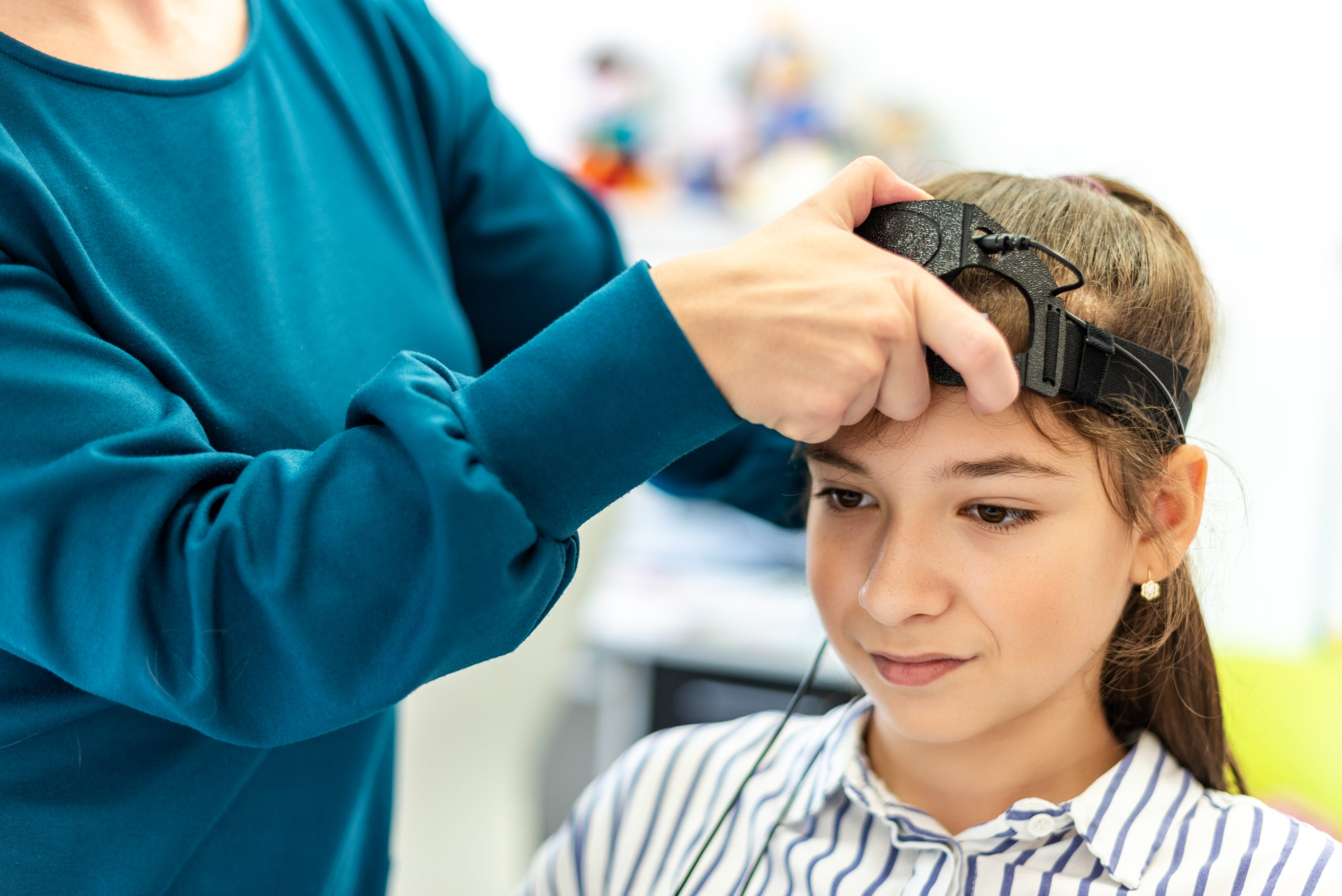Utilizing Neurofeedback for Depression: A Promising Treatment
Utilizing Neurofeedback for Depression: A Promising Treatment
Utilizing Neurofeedback for Depression: A Promising Treatment
Learn how neurofeedback brain training is a promising treatment for depression.

Article Contents
What is Brain Training Neurofeedback?
Most people know that depression can be treated with medication and therapy, but fewer people know of neurofeedback for depression. Neurofeedback is a type of therapy that improves various conditions affecting mood, anxiety, attention, and even academic and athletic ability. Instead of simply treating symptoms like medication does, neurofeedback aims to fix problems at the root—the root being brainwaves.
How it Works
Brainwaves are the representations of the brain’s electrical activity. So, how does neurofeedback work for depression? Neurofeedback measures brainwaves and then adjusts any disrupted brainwaves into a healthy range. Brainwaves are measured by a non-invasive test called an electroencephalography (EEG), then transmitted into a graph or audio. Your healthcare provider then interprets the graph or audio and determines which brain wave therapy for depression is right for you.After a brain mapping for depression is created, treatment begins. Brain wave therapy for depression is safe and non-invasive and involves watching videos, playing video games, or listening to audio to train depression brain waves into healthier patterns. Your brain is ‘rewarded’ for positive thinking patterns, and—since the brain is reward-seeking—it continues to engage in healthy thinking patterns even after treatment ends.
Neurofeedback and Depression: What is Depression?

Depression, or major depressive disorder, is a mood disorder that makes you feel sad, hopeless, and low in energy, and you may also experience a loss of interest in life in general. According to the National Institute of Mental Health, major depression affects about 7% of the U.S. population over age 18. Additionally, between 20% and 25% of adults may experience an episode of major depression at some point during their life.1
Find Help Now
Typically, treatment can improve depression, the common ones being psychotherapy and pharmaceutical medications. However, some people with the condition—especially treatment-resistant depression (TRD)—may benefit from alternative therapies like neurofeedback for depression.
Most people feel depression at some point in their lives, but major depressive disorder goes beyond occasional bouts of sadness—people with depression experience ongoing symptoms that interfere with their daily life and ability to function normally.
Symptoms of Depression
Some of these symptoms include:
- Sadness and hopelessness
- Low energy and fatigue
- Feelings of worthlessness or guilt
- Restlessness
- Appetite changes, either eating too much or too little
- Anhedonia, or lack of pleasure in things they typically enjoy
- Trouble sleeping, either sleeping too much or too little
- Recurrent thoughts of death or suicide
How Long Can Depression Last?
Depression can last for weeks, months, or years, depending on lifestyle factors and if you seek treatment. Learning how to calm anxiety and depression through treatment can reduce the chance of recurring bouts of depression. Some people only have one depressive episode in life, but many people have frequent episodes of depression.
Treatment is essential because depression that’s left untreated can have significant impacts on your life. Like any other illness, the symptoms of depression can get worse with time, especially without treatment. Untreated depression can lead to job loss or relationship problems, and at worst, self-harm or suicide. If you or someone you know is experiencing depression and suicidal ideation, reach out to the National Suicide Prevention Lifeline at 800-273-8255.
Seeking treatment, especially if you’re someone who experiences long-term or recurring bouts of depression, is crucial in managing symptoms and improving quality of life.
Areas of the Brain Affect Mood and Cause Depression
Chemical imbalances cause depression in the brain, but it’s not that simple. Some may wonder what part of the brain depression affects; research suggests it affects multiple parts of the brain.2 The four main areas of the brain that relate to depression are explained below.
- Amygdala. The amygdala of depressed people is extremely active.3 This part of the brain determines whether you feel fear or pleasure as a reaction to certain situations. In people with depression, the amygdala releases excessive amounts of cortisol, leading to a hyperactive and enlarged amygdala.
- Thalamus. The thalamus is a small part of the brain that controls emotional regulation and transmits almost all sensory information to the cortex, including sight, taste, touch, and balance. Studies have shown that, in depressed people, the thalamus is significantly smaller in size than non-depressed people; studies have also shown that the thalamus of depressed people contains more nerve cells than non-depressed people.4
- Hippocampus. The hippocampus is an area of the brain responsible for memory and emotion. Studies show that depression seems to shrink the hippocampus, lessening neuroplasticity and leading to emotional problems.5
- Prefrontal Cortex. The prefrontal cortex plays a role in attention, impulse control, memory, and cognitive flexibility. People with depression tend to have abnormal functioning in this area of the brain, which influences how they think about themselves and others.
Brain Wave Therapy for Depression: Is Neurofeedback Effective?
Because the brain plays such a central role in depression, it makes sense that brain training neurofeedback is a helpful treatment. Neurofeedback targets depression brain waves by teaching the brain new ways of thinking, creating long-term positive changes in how you think and feel.
Studies revealed that, after thirty sessions of neurofeedback for depression, almost 50% of people with severe depression showed normal brain activity.6
Helps Improve Mood
Brain training neurofeedback can also help calm anxiety and depression. Scientists have discovered that we tend to feel positive and upbeat when the left frontal area of the brain is more active than the right side of the brain. Often, people with depression will have more activity in the right frontal area, which leads to feelings of sadness, loneliness, and isolation. However, neurofeedback for depression can solve that problem, using sessions to train the left frontal lobe to be more active and improve your mood.Helps Boost Self-Esteem
Neurofeedback for depression can also boost self-esteem. People with depression tend to have feelings of guilt, shame, and low self-worth. These symptoms are often due to a lack of connectivity between the right anterior superior temporal and the anterior subgenual cingulate regions of the brain. However, brain wave therapy for depression can target these areas, improving connectivity and boosting self-esteem.7How to Calm Anxiety and Depression with Neurofeedback
Because neurofeedback and brain mapping for depression can show which brain waves need to be targeted, neurofeedback therapists can develop a treatment plan to help you better manage your thoughts and emotions.
At Iris Healing®, you can see your decision-making processes through neurofeedback—good and bad. This aspect empowers you to understand which behaviors you want to change, and our staff at Iris Healing® then creates a holistic treatment plan that encourages healthier thinking patterns. Iris Healing® utilizes neurofeedback therapy for depression, anxiety, substance abuse disorder, and several other conditions you may need assistance with.
To learn more about how our staff at Iris Healing® can help you, reach out through their website or call us at (844) 663-4747. Our team of professionals is ready to help you achieve life-long healing, so reach out to us today.
Resources
- https://www.webmd.com/depression/guide/major-depression
- https://www.health.harvard.edu/mind-and-mood/what-causes-depression
- https://qbi.uq.edu.au/brain/brain-diseases/depression/depression-and-brain
- https://www.sciencedaily.com/releases/2004/07/040702092133.htm
- https://www.medicalnewstoday.com/articles/296188#Smaller-hippocampus-largely-accounted-for-by-recurrent-depression
- https://www.neuroregulation.org/article/view/16935/11343
- https://www.medicalnewstoday.com/articles/326666#Previous-study-examined-connectivity




